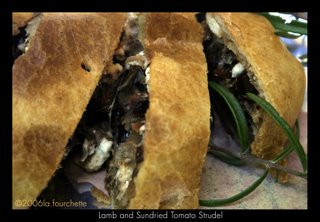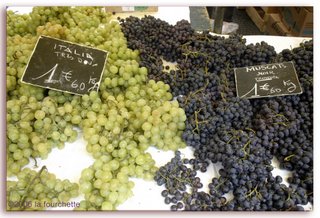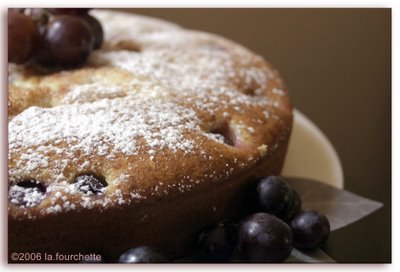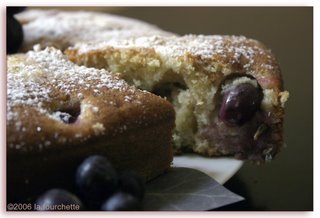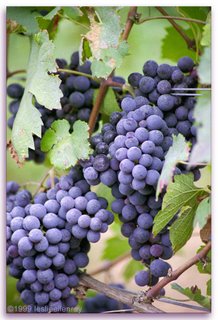I've a few blog posts to catch up with...but I did well on my exams. woohoo!
À bientôt!
L
The Lights of Aix en Provence



 As a child of the sixties, the only olive I knew was black and salty, tough and hollow…if we were lucky - that is to say, lucky if they were hollow. (I wasn’t much into those pits.) There was a long-standing pattern of olives being stolen from my plate at dinner when a particular cousin who, several years older than I, took great pleasure in this little joke. (I should have been happy for those olives to be nipped!) Aside from being rather protective of the food on my plate (something that has stayed with me to this day), I was not the olive lover in my family. That role belonged to my sister. With a pitted olive on each finger, she would slowly nibble them off, savoring them as if there was something really special going on that I simply didn’t understand. Further proof of her love of olives was evidenced by the fact that she would regularly request those fat, sour green olives stuffed with pimento. Ahhh…such was life in the sixties with two little girls who were training their very different palates.
As a child of the sixties, the only olive I knew was black and salty, tough and hollow…if we were lucky - that is to say, lucky if they were hollow. (I wasn’t much into those pits.) There was a long-standing pattern of olives being stolen from my plate at dinner when a particular cousin who, several years older than I, took great pleasure in this little joke. (I should have been happy for those olives to be nipped!) Aside from being rather protective of the food on my plate (something that has stayed with me to this day), I was not the olive lover in my family. That role belonged to my sister. With a pitted olive on each finger, she would slowly nibble them off, savoring them as if there was something really special going on that I simply didn’t understand. Further proof of her love of olives was evidenced by the fact that she would regularly request those fat, sour green olives stuffed with pimento. Ahhh…such was life in the sixties with two little girls who were training their very different palates.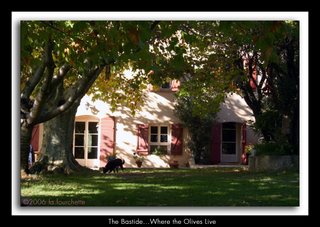


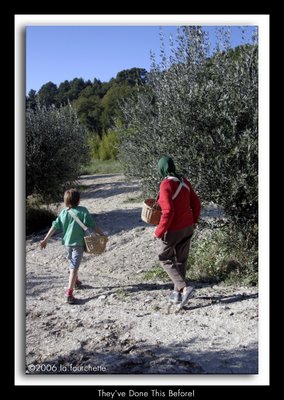
 People were working below and around the perimeter of the trees. Some were chatting quietly…others were working in silence. There was some sort of collaboration between the people and the trees. Olives that had been blown off the tree were collected from the ground before the nets were spread and the picking began from the olives suspended in the branches.
People were working below and around the perimeter of the trees. Some were chatting quietly…others were working in silence. There was some sort of collaboration between the people and the trees. Olives that had been blown off the tree were collected from the ground before the nets were spread and the picking began from the olives suspended in the branches. 
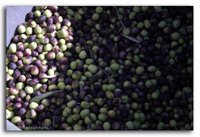
 (adapted from At Home in Provence by Patricia Wells)
(adapted from At Home in Provence by Patricia Wells)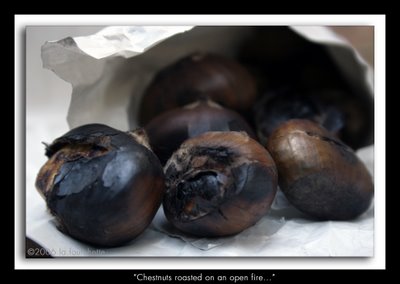
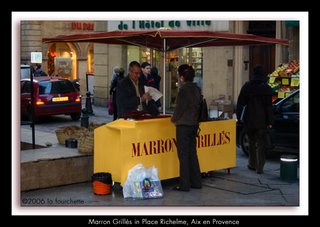

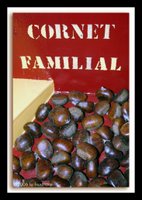 As for the actual roasted chestnuts: I look forward to them being a part of the cold weather survival kit. Hot off the grill, they are served in paper cones and the sweet smoky fragrance that permeates the air of the marché is the first tease from this delicious treat. That first “sniff” is followed by the sight of variegated brown charred chestnuts toasting up on the fire and then the pleasant sensation of my cold hand wrapping around the moist warmth of the paper cone filled with steamy chestnuts. There is such pleasure in an experience that tickles all of my senses.
As for the actual roasted chestnuts: I look forward to them being a part of the cold weather survival kit. Hot off the grill, they are served in paper cones and the sweet smoky fragrance that permeates the air of the marché is the first tease from this delicious treat. That first “sniff” is followed by the sight of variegated brown charred chestnuts toasting up on the fire and then the pleasant sensation of my cold hand wrapping around the moist warmth of the paper cone filled with steamy chestnuts. There is such pleasure in an experience that tickles all of my senses. 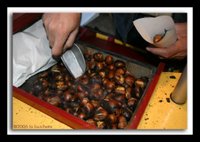
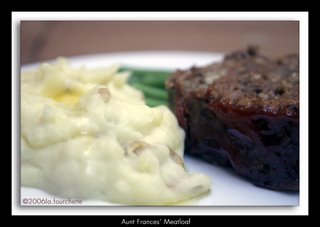
 The discussion turned to much more pertinent matters: Six year old Olivia's first tooth loss - and we were given all of the details of exactly how it had come to pass earlier in the day. I was also filled in on the tradition in France as to who it is that sneaks under the pillows of children in the dark of night to retrieve the tooth in exchange for a small offering of money: La Petite Souris! No Tooth Fairies for the French children. No, “souris”! It's a little mouse with magical powers who comes in for the tidbit of cheese left as an offering (and enticement, I suppose) and leaves some “scratch” (and apparently sometimes a note) for the effort.
The discussion turned to much more pertinent matters: Six year old Olivia's first tooth loss - and we were given all of the details of exactly how it had come to pass earlier in the day. I was also filled in on the tradition in France as to who it is that sneaks under the pillows of children in the dark of night to retrieve the tooth in exchange for a small offering of money: La Petite Souris! No Tooth Fairies for the French children. No, “souris”! It's a little mouse with magical powers who comes in for the tidbit of cheese left as an offering (and enticement, I suppose) and leaves some “scratch” (and apparently sometimes a note) for the effort.  her tooth in the pocket of La Petite Souris and tucked it under her pillow for retrieval. That ritual pretty much became the main event around which the world revolved for the evening.
her tooth in the pocket of La Petite Souris and tucked it under her pillow for retrieval. That ritual pretty much became the main event around which the world revolved for the evening. 
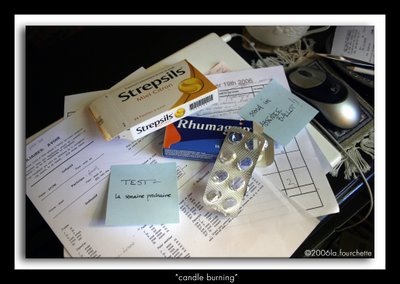

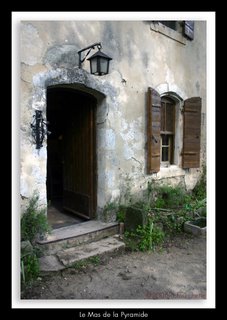 A few steps further brought into view the troglodyte farmhouse under a canopy of ancient leafy trees shading solid stone tables on the terrace. Indeed, no matter how many times I have visited this spot, I experience a sense of wonder at stepping into a bygone time. Nothing fancy, this. And perhaps that is part of the magic. From the potato chips to accompany the aperitifs to the cartoon glasses used for wine and water at the lunch tables, the simplicity of the presentation allows one to really take in the “gestalt” of the experience. And on this lovely afternoon, we all took a metaphorical “dive into the deep end” of Provence.
A few steps further brought into view the troglodyte farmhouse under a canopy of ancient leafy trees shading solid stone tables on the terrace. Indeed, no matter how many times I have visited this spot, I experience a sense of wonder at stepping into a bygone time. Nothing fancy, this. And perhaps that is part of the magic. From the potato chips to accompany the aperitifs to the cartoon glasses used for wine and water at the lunch tables, the simplicity of the presentation allows one to really take in the “gestalt” of the experience. And on this lovely afternoon, we all took a metaphorical “dive into the deep end” of Provence.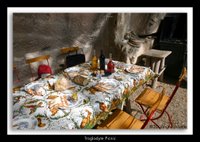 After aperitifs of our local pastis and wandering around the ancient Roman quarry and farmhouse, we sat down at a table, gently warmed by the mid-day sunshine, which danced off the cave wall that curved around us, to share a rustic provençal aïoli. A garlicky mayonnaise served with salt cod, steamed vegetables and hard-boiled eggs, this was special fare for the occasion. (Monsieur Mauron often pulls out platters of roasted lamb, accompanied by ratatouille or provençal white beans and an herbed or olive-filled omelet as the main course.) But today we would be joining a small group of friends he was entertaining and he included us in the day’s meal.
After aperitifs of our local pastis and wandering around the ancient Roman quarry and farmhouse, we sat down at a table, gently warmed by the mid-day sunshine, which danced off the cave wall that curved around us, to share a rustic provençal aïoli. A garlicky mayonnaise served with salt cod, steamed vegetables and hard-boiled eggs, this was special fare for the occasion. (Monsieur Mauron often pulls out platters of roasted lamb, accompanied by ratatouille or provençal white beans and an herbed or olive-filled omelet as the main course.) But today we would be joining a small group of friends he was entertaining and he included us in the day’s meal. 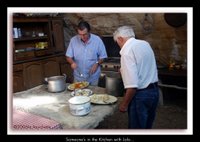 Before we tucked into the aïoli, we were served caillette (a rustic pâté made of pork, greens and herbs) and slices of andouillette (which is not sausage – I would quickly learn!) as a first course.
Before we tucked into the aïoli, we were served caillette (a rustic pâté made of pork, greens and herbs) and slices of andouillette (which is not sausage – I would quickly learn!) as a first course. 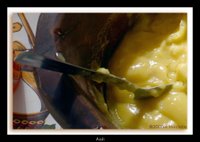
 When the aïoli arrived, we plated up (family style) fragrant steamed potatoes, cauliflower, carrots and salt cod to dip into the creamy, garlicky sauce. A basket of hard-boiled eggs rounded out what is the standard combination for this dish, which is a typical representation of the bounty and style of cuisine that is Provence.
When the aïoli arrived, we plated up (family style) fragrant steamed potatoes, cauliflower, carrots and salt cod to dip into the creamy, garlicky sauce. A basket of hard-boiled eggs rounded out what is the standard combination for this dish, which is a typical representation of the bounty and style of cuisine that is Provence.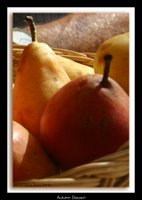 As usual, this was followed by a selection of cheeses and bread, topped off with a basket of ripe, juicy pears – a sure sign of autumn.
As usual, this was followed by a selection of cheeses and bread, topped off with a basket of ripe, juicy pears – a sure sign of autumn.

 For example, E: “Earl Gray” with Earl Gray white tips, G: “Guyana” with nutmeg, cinnamon, sun-dried Bourbon vanilla and fresh lemon peel...you get the idea! Our Monsieur Durand is way more than just another pretty face! This man gets chocolate!
For example, E: “Earl Gray” with Earl Gray white tips, G: “Guyana” with nutmeg, cinnamon, sun-dried Bourbon vanilla and fresh lemon peel...you get the idea! Our Monsieur Durand is way more than just another pretty face! This man gets chocolate! 
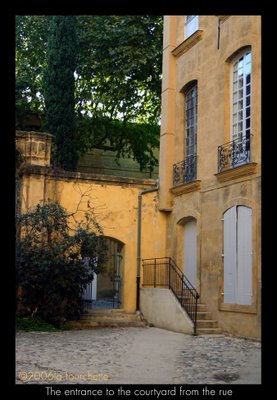
 Needless to say, the setting is beautiful. Imagine passing through ancient courtyards and up and down staircases polished by centuries of footsteps each day. The "hotel particulier" in which the institute is located is just across from the main cathedral of Aix.
Needless to say, the setting is beautiful. Imagine passing through ancient courtyards and up and down staircases polished by centuries of footsteps each day. The "hotel particulier" in which the institute is located is just across from the main cathedral of Aix. 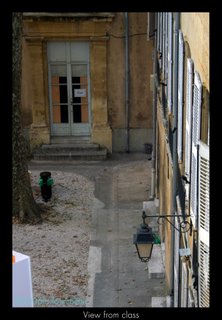 (In fact, this morning during class, the bells of the cathedral began to toll. The slow and mournful reverberations in deep tones entered our classroom in waves of sound followed, finally, by silence. A little less than an hour later, the ringing took on a rapid pace and sounded quite insistent...calling for attention as if to heed a message. The disruption was so profound that the professor had to stop his lesson to explain that when there is a funeral, the bells toll mournfully as the body is taken into the cathedral. He went on to explain that in the Catholic tradition it is believed that the soul rises during the service and when the body is taken out of the cathedral, the bells ring in a celebratory mode to signify the ascension. A little language...a little catechism...it all adds up to a little more bang for my euro than I had anticipated!)
(In fact, this morning during class, the bells of the cathedral began to toll. The slow and mournful reverberations in deep tones entered our classroom in waves of sound followed, finally, by silence. A little less than an hour later, the ringing took on a rapid pace and sounded quite insistent...calling for attention as if to heed a message. The disruption was so profound that the professor had to stop his lesson to explain that when there is a funeral, the bells toll mournfully as the body is taken into the cathedral. He went on to explain that in the Catholic tradition it is believed that the soul rises during the service and when the body is taken out of the cathedral, the bells ring in a celebratory mode to signify the ascension. A little language...a little catechism...it all adds up to a little more bang for my euro than I had anticipated!)
